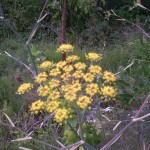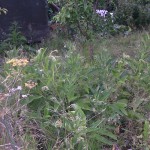 I began converting my bog standard organic allotment plot into something that incorporated the principles and ethics of permaculture almost three years ago. Much has happened since the transformation began, and I have to say, all of it good. In its previous existence the plot relied on external outputs to keep up its fertility levels. However since introducing and incorporating permaculture principles I have managed to close the fertility loop by generating it on site as opposed to bringing it in onsite. The purpose of this post really is to explain what has worked on the plot that could be replicated on any other temperate climate allotment plot.
I began converting my bog standard organic allotment plot into something that incorporated the principles and ethics of permaculture almost three years ago. Much has happened since the transformation began, and I have to say, all of it good. In its previous existence the plot relied on external outputs to keep up its fertility levels. However since introducing and incorporating permaculture principles I have managed to close the fertility loop by generating it on site as opposed to bringing it in onsite. The purpose of this post really is to explain what has worked on the plot that could be replicated on any other temperate climate allotment plot.
Locking in the nutrients
One of the first things I did on this plot was to take out the raised beds and allow the plot to grow, over a twelve month period all manner of plants and grasses began to appear, some I’d never seen before. The effect of allowing the plot to just grow whatever it produced in its first year as a permaculture plot covered up the bare soil and offered protection from the bright sunshine. During the second year of the plot, all bare soil was then completely covered; this had the effect of both protecting the surface soil and locking in the nutrients. This year, I have selected out different areas of the plot, then simply covered them with cardboard and a compost topping and planted directly on top, all of the grasses and other plants below the compost will, in turn provide nutrients for the newly emerging plants. 
Leaving a part of your allotment wild
I have not covered all of the plot with cardboard and compost, some of the site has been left to grow wild in order to provide habitats for wildlife, at the end of the season, the overgrown wild areas will be cut once only, the cuttings from these areas is then used to either feed our chickens in terms of grass and other seeds, or is used as bedding for the chickens.
Creating a pond for your plot
I have made three round small interconnected ponds from containers I found in skips, the ponds serve the purpose of being a watering hole for insects and birds, whilst also attracting frogs which in turn feed on small slugs. The ponds also help during the spells of hot weather that we have been having as a cooler place, and haven for wildlife.
Steve – Permanent Culture Now
